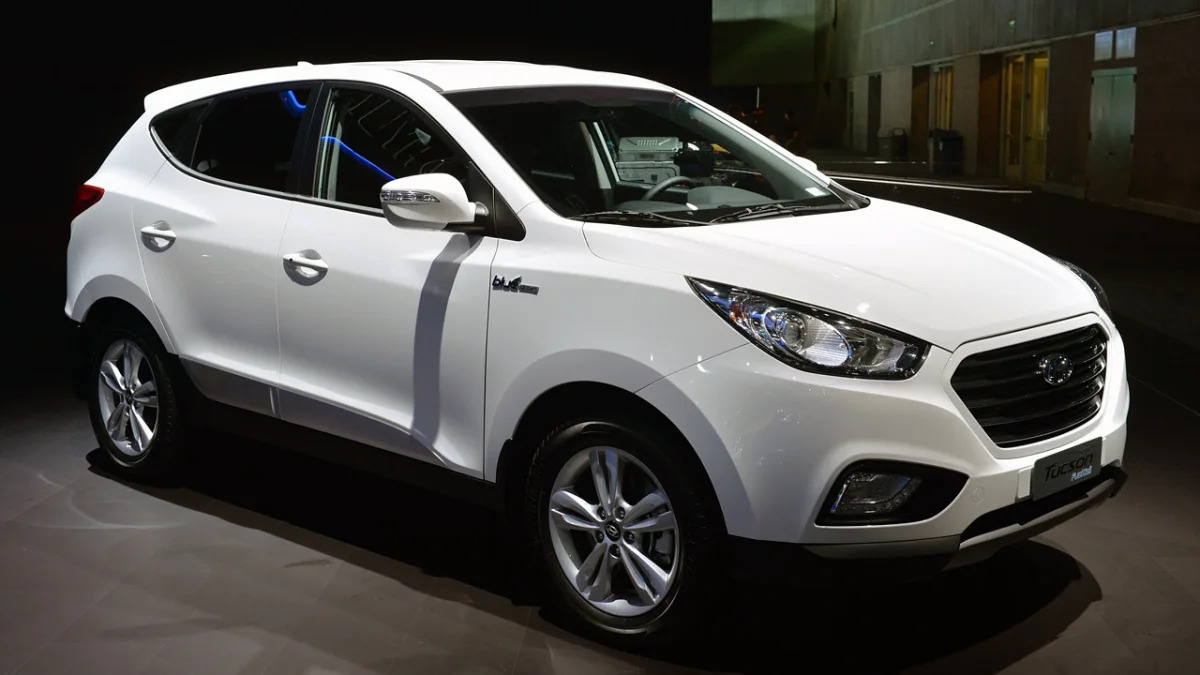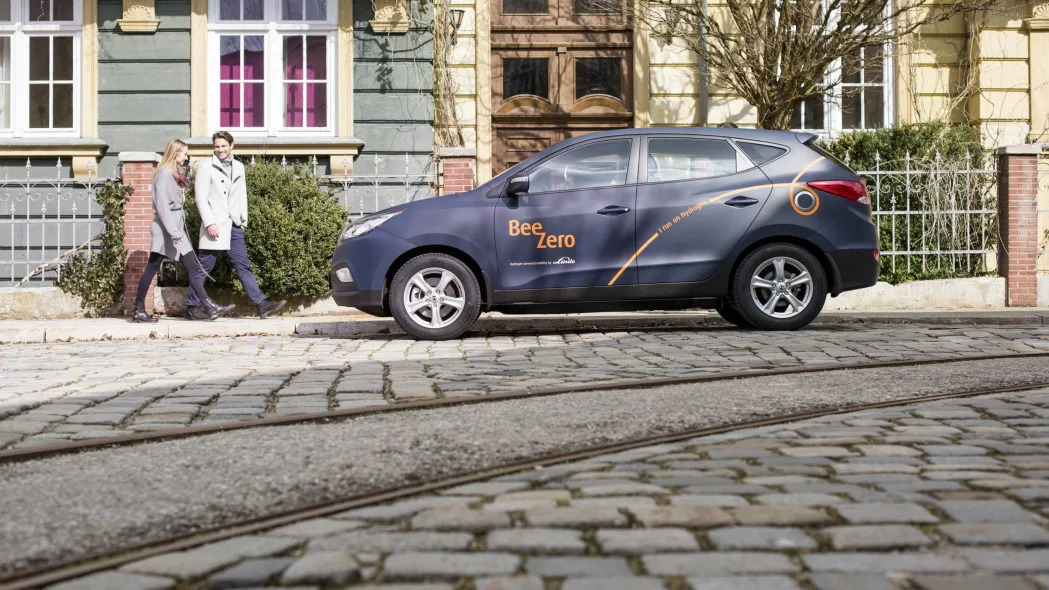Anyone paying close enough attention will know that Hyundai has been working on hydrogen fuel cell technology since a little before 2000. O'Brien said that Hyundai's fuel cell program "predated regulation for us by more than a decade and a half." That's why the company is in good standing today. In the ZEV marketplace, the value of one ZEV credit is private information between those who sell them and those looking to buy. So, while we don't know how much money Hyundai's extra credits are actually worth, California does publish the credit balances, so we can at least know how many Hyundai has.The most recent seem to be from 2014, which are available here. That's when Hyundai had 896 ZEV credits, 4,825.71 "advanced technology partial zero-emission vehicles" (AT-PZEV) and 6,751.80 PZEV credits, but O'Brien said that, "We are not in the business of buying or selling credits. To my knowledge, there is nobody I know in this company that has investigated either the purchase or sale of ZEV credits.""We are not in the business of buying or selling ZEV credits." - Mike O'Brien
Instead, Hyundai - like many other automakers - is generating its own credits by selling zero-emission vehicles to offset the vehicles it sells that are too dirty in the ZEV credit scheme. And the company's recent expansion of Tucson Fuel Cell sales into Northern California is likely a preview for the vehicle's availability in the Northeast. After all, that's where the next batch of H2 stations is due and O'Brien has said in the past the Hyundai will sell the vehicle where there's fuel. O'Brien said Hyundai is talking to the same hydrogen providers that competitors like Honda and Toyota are talking to (so, FirstElement Fuel), but is not ready to make any announcements about any infrastructure partnerships.
Aside from simply selling more zero-emission vehicles, there is another, ZEV-credit reason why selling the Tucson Fuel Cell in the Northeast makes sense for Hyundai. The hydrogen Tuscon earns the type five ZEV credit, which means each vehicle sold is worth nine credits. When the company makes the vehicle available in other states that follow California's ZEV rules (the so-called Section 177 states*), then that value is multiplied, up to 26 credits per vehicles, as Motor1 noted recently. As O'Brien explained:
There's more detail in this ZEV tutorial (PDF) from CARB.In California it earns nine credits. ... Any battery, electric or fuel cell that is sold in California counts as if it were sold in any other ZEV state. That is done on a ratio of number of sales in California relative to number of sales in any other ZEV state. When you add up all those credits, it is kind of like a credit multiplier. In effect it increases the number of credits that you have but not in California, it is counted towards all the ZEV states. ... If we sold in all the ZEV states, it counts as 26 credits.
Let's just say we sold 10,000 total cars in California and then we sold 5,000 cars in New York. That means for any battery, electric, or fuel cell that we sell in California let's say it is one credit, it would get 0.5 credits in New York because of that ratio. When you add up the number of credits that we would get. Let's say California is 1, 0.5 in New York. 0.2 Vermont and so forth then that is how I think you get that multiplier and that is where, in the end, that is where they may have gotten the 26 number.
The ZEV regulations are not only meant to get zero-emission vehicles on the road in California, but also green the rest of an automaker's entire fleet. Hence the credits for "partial zero-emission vehicles" (a technical nonsense term if we've ever heard one) and things like that. Mike O'Brien, Hyundai's vice president of corporate and product planning, told AutoblogGreen that the ZEV rules worked pretty much exactly as intended with Hyundai:
Of course, Hyundai's big green car plans need to have willing customers, and that's one reason why, alongside a number of plug-ins, Hyundai really likes the idea of offering hydrogen fuel cell vehicles. "Customers love the idea of becoming more green as long as it does not inconvenience them in any way," O'Brien said. "The advantage that we see with hydrogen is the ability to cover our entire model line without offering any significant vehicle compromise that can be measured."Clearly the idea behind the regulation was to motivate auto manufacturers to develop vehicles that had zero carbon footprint or the potential for zero carbon footprint. The accumulation of the credits then allows those manufacturers to sell in those states. I think from our perspective we want to do our best and the generation of credits allows us to continue business in those states that have a ZEV mandate.
He also said:
Our product strategy obviously looks pretty forward into the future. It was always our intention to bring these technologies to market as we felt like the customer experience would need the same level as our gasoline products. For fuel cell we have been very careful to introduce it only in those places where there is sufficient infrastructure. ...
We have to be really cognizant and aware of the total satisfaction experience not just the car itself but the availability of fuel and the reliability of stations that are providing it. It has been a measured strategy just based on maturing of our technology of the vehicle itself and the availability of commercially distributed hydrogen. I think that is what really prompted us to make the [Tucson Fuel Cell] available. The vehicle itself being ready and the infrastructure becoming ready to allow us to sell vehicles.
In other words, with the ZEV credit process working in the company's favor, the technology advancing, and more H2 stations on the way, don't look for Hyundai to stop its hydrogen and electric vehicle train any time soon.
* The 15 "Section 177" states are: Connecticut, Delaware, Georgia, Maine, Maryland, Massachusetts, New Jersey, New Mexico, New York, North Carolina, Oregon, Pennsylvania, Rhode Island, Vermont, and Washington.
Related Video:













Sign in to post
Please sign in to leave a comment.
Continue